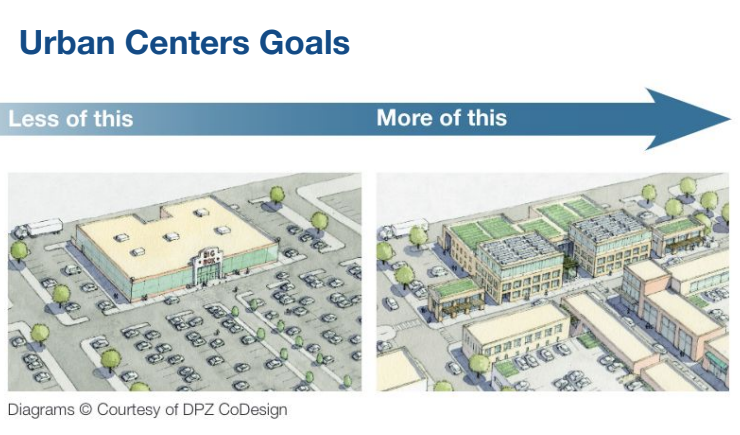At their September 28 meeting, the Asheville City Council adopted a new Urban Place Form Code District. The rezoning Urban Centers initiative was managed by the Asheville Department of Planning & Urban Design and was developed as a recommendation of the City’s Comprehensive Plan, Living Asheville. Urban Centers are intended to foster higher-density, mixed-use development that is economically viable and pedestrian oriented in a way that contributes to the placemaking character of the city.
The vision of the new zoning district is to support reinvestment through more efficient land use patterns that take advantage of the city’s bus system. It is designed to improve walkability and neighborhood quality of life while bringing housing closer to jobs and incentivizing housing to be integrated into projects located on higher-frequency transit corridors.
Building upon previous form codes the city adopted in the River Arts District and on Haywood Road, staff developed the Urban Place Form District with an emphasis on the physical form as the organizing principle of the code. Form-based codes address the relationships between structures and the public realm to create regulations that are more predictable, particularly because of the greater reliance on visuals and graphics to highlight expected results.
The initial rezoning included four nodes of property located on Tunnel Road, Bleachery Boulevard, Merrimon Avenue, and South Tunnel Road. The sites were identified on the city’s Future Land Use Map as Urban Centers and are also a key part of the city’s transit-supportive growth strategy as identified on the Preferred Growth Scenario Map.
The rezoning changes the regulatory framework for these properties so that, over time, they will develop in a way that better aligns with the city’s long-term goals related to livability, equity and sustainability. In particular, large sites will transition into mixed-use developments with housing, improved pedestrian facilities such as sidewalks and street trees, and better internal connectivity that supports transit and bicycling.
Phase II of the rezoning is slated to be presented to the Planning & Zoning Commission at their next meeting, at 5 p.m. Oct 6. More information is available on the website for the Planning & Zoning Commission here.
Find the staff presentation to Council at this link. Find the staff report to Council at this link.
